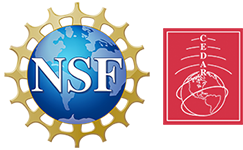Investigations on the Dynamics of Noctilucent Clouds Using Combined Lidar, Meteor Radar, and Satellite Observations
Noctilucent clouds (NLCs) at Poker Flat Research Range in Chatanika, Alaska (65° N, 147° W), are strongly influenced by mesospheric temperature, humidity, and wind dynamics. This study combines Microwave Limb Sounder (MLS) data (2005–2022), lidar measurements, and meteor radar observations (2019–2022) to investigate the atmospheric conditions driving NLC occurrence and transport. Interestingly, we observed the strongest NLCs during subsaturated conditions, indicating that these clouds likely formed farther north of Chatanika and were subsequently transported southward. Meteor radar wind data reveal persistent meridional flows that play a crucial role in delivering NLCs to the study site. The stability analysis further suggests that regions farther north experience stronger supersaturation and more frequent cloud formation, supporting the idea of long-range transport. The lidar backscatter data show an relatively increasing trend over the study period, suggesting that NLCs are becoming optically thicker with time, which may indicate a growing presence of water vapor in the mesosphere. This integrated approach highlights the significant influence of regional wind dynamics and mesospheric conditions on NLC visibility at Chatanika, suggest potential long-term changes in the upper atmospheric environment at high latitudes.
